We’ve all seen bananas turn brown. In this project, I show you how to intentionally make spots on the peel prematurely brown so that you can make a picture.
Here is a video summarizing the project.
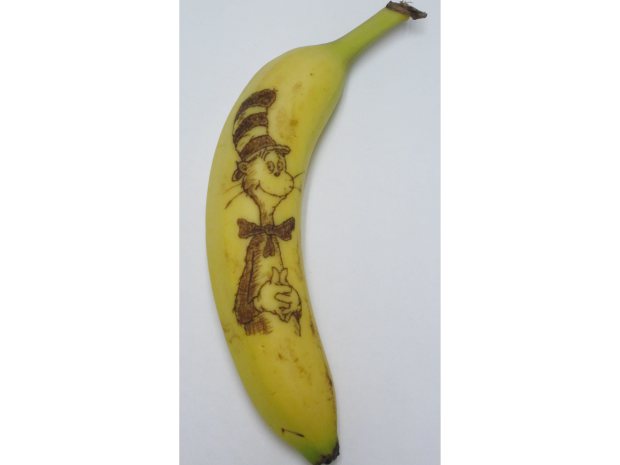
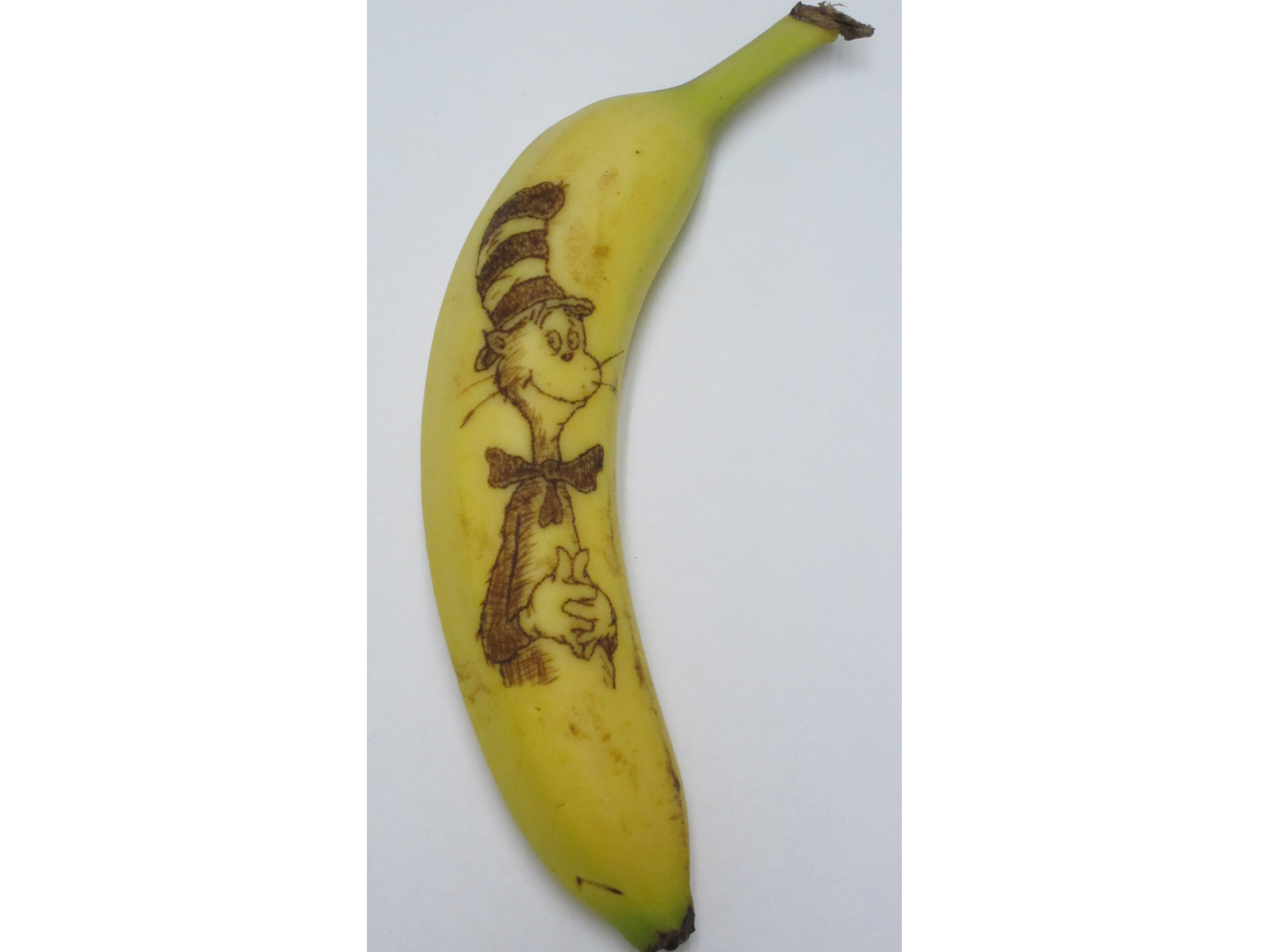
When you bruise or break the skin of a banana peel, it releases chemicals that oxidize and turn brown.
By using precision tools like a sewing needle, you can make small dots and scratches that are fine enough to draw a picture.
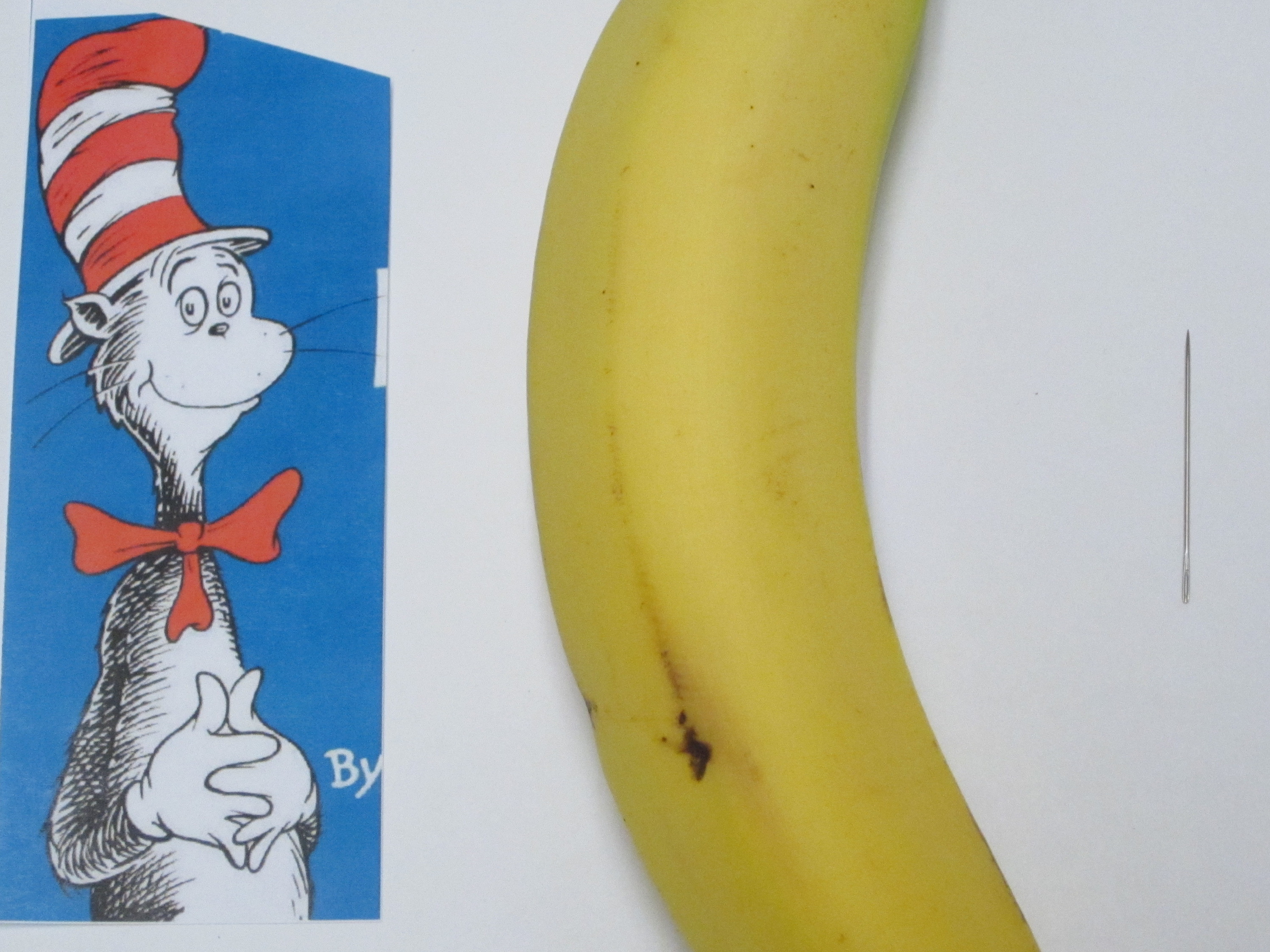
To make this project you will need three things: A reference picture, a banana, and a sharp tool for marking on the banana.
First, select a reference picture. I am using The Cat in the Hat. It helps if the picture is proportioned so that it can at least somewhat fit on a banana. Long rectangular pictures will fit better than square pictures. With most pictures, you will probably need to crop the edges a little.
When selecting a banana keep in mind how the peel changes throughout its ripening process. The greener the banana is, the firmer its cell membranes are. When the cell is punctured, the chemicals do not bleed as much. This creates smaller, more well-defined dots. Riper bananas with weaker membranes will create larger dots with softer edges.
The marking tool that you select is determined by the kinds of lines that you want to make for your picture. Any sharp object can work, but as you might expect, each tool creates a slightly different mark. Smaller needles (like sewing needles) create small light dots. Larger needles (like thumbtacks) make larger darker dots.
Regardless of what sharp object you choose, you may wish to modify it slightly to make it easier to handle. For instance, something as small as a sewing needle can be difficult to work with. So I inserted it into the end of a 0.5 mm mechanical pencil. This made it a lot more convenient to use.

If you are not a great freehand artist, I recommend starting with a stencil. Print out a copy of your picture scaled to the size of your banana. Then cut it out and line it up with your banana. You may need to trim it so that it will lie flat. Once you are happy with the positioning, tape down the edges.
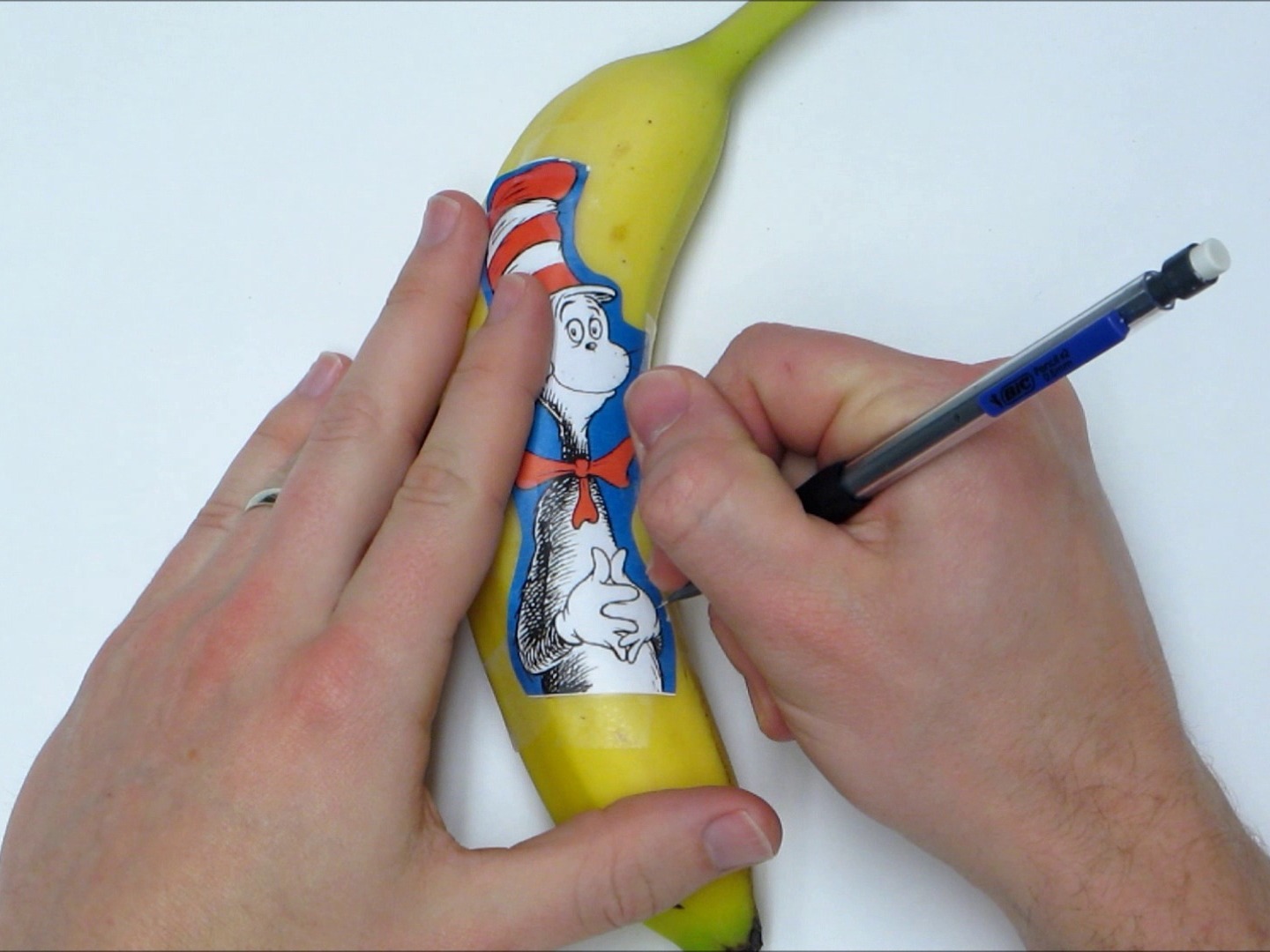
The first step in applying your image is to create a rough outline of all the major edges. On a given line, use your needle to pierce through the paper and into the banana peel. Try to make the puncture as shallow as possible. Repeat this all along the line. Try to keep the dots close together (no more than 1 mm apart).
Your hand will probably get tired after a while. This is the thing that everyone hates about pointillism. Try to complete whole lines or sections before taking a break. Otherwise a line may look uneven if certain parts are older and more developed than others.
After you have traced over all the major lines, you can remove the paper stencil. If all went well, there should be a faint dot outline of your image on the banana peel.
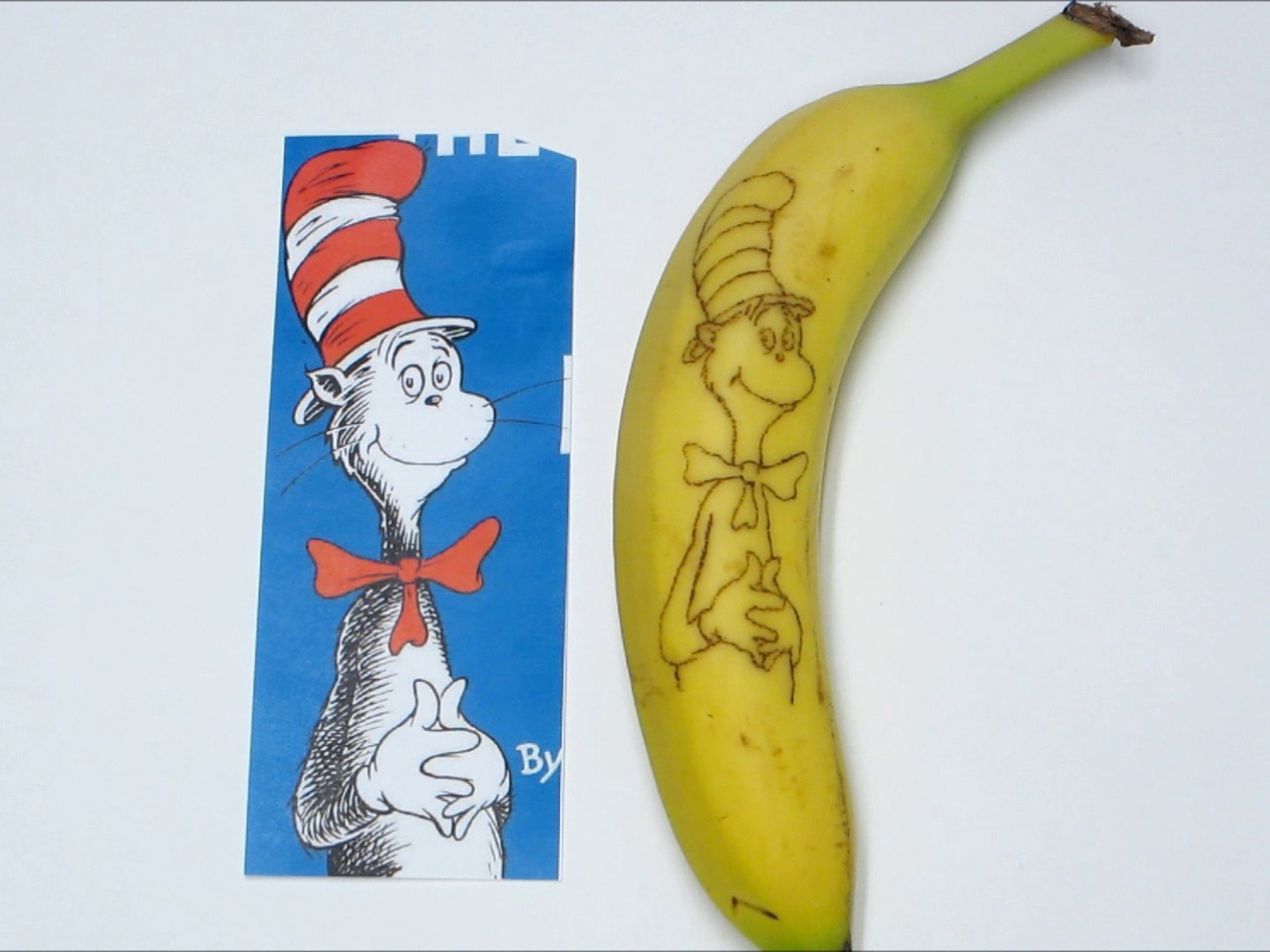
Now it’s time to play connect the dots. Go back over each line and fill in all the spaces by adding more dots until it looks like a solid line.
If at this point you and your hand are completely fed up with making dots, you can take a shortcut and connect the dots by just cutting the lines with either a knife or by dragging your needle across the surfaces so that it breaks the skin. This doesn’t gives you quite as much control over the line shape but it is a lot faster and easier.
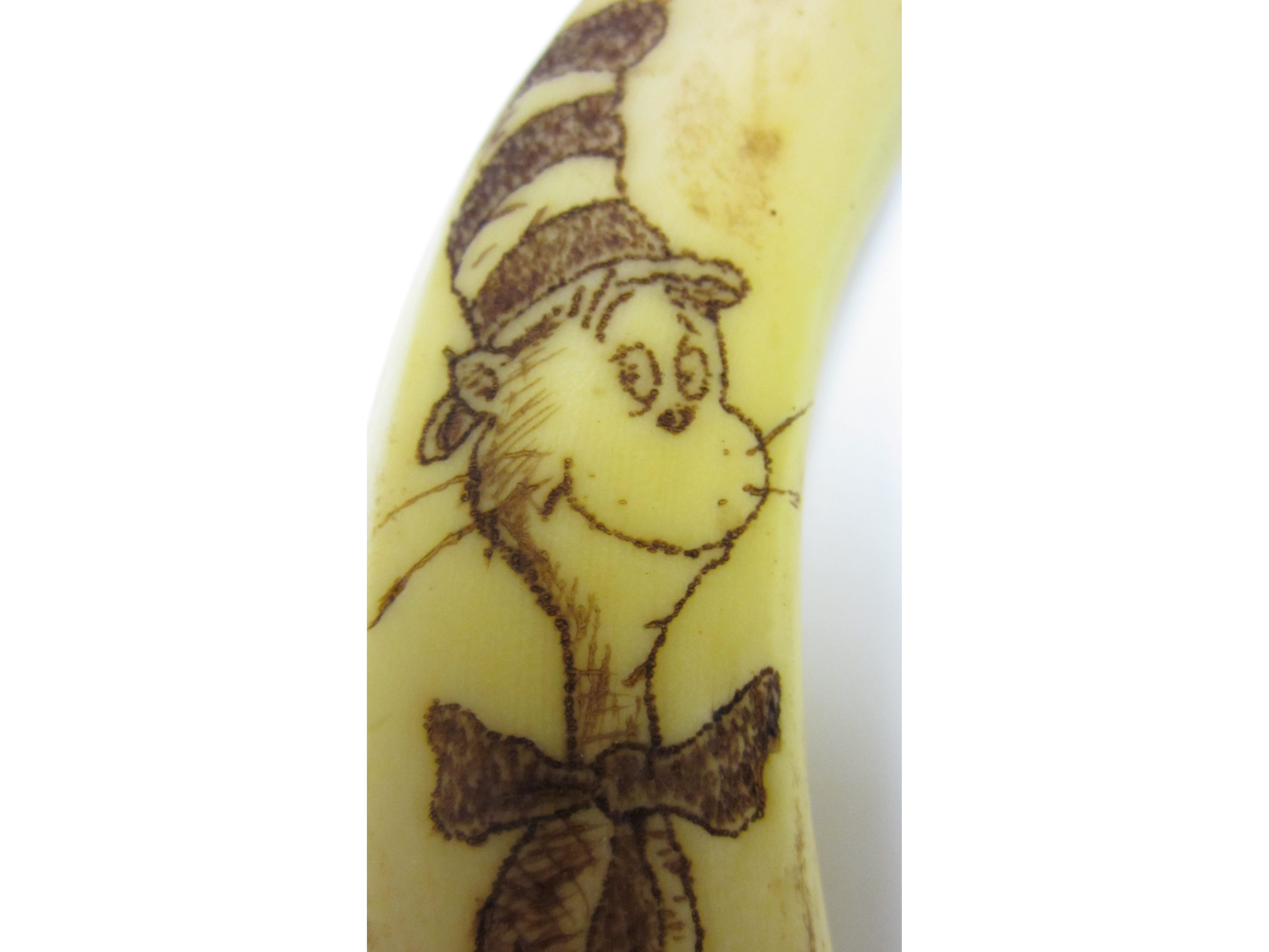
After you have finished defining all the solid lines, it is time to add shading. When working with a banana peel the most useful shading techniques are stippling, hatching, and smooth shading.
Stippling: Creates shading by varying the density of dots. To create large dots, make shallow punctures in the skin as you did in the previous steps. To create smaller and lighter dots, hold the needle at a shallow angle and use your finger to repeatedly tap it against the surface. You may need to repeat this process several times.
Hatching: Creates shading by varying the density of parallel lines. Hatching can be difficult on a banana peel because the surface texture changes as you mark on it. This makes it harder to keep the lines even.
Smooth Shading: Creates a continuous gradient of color without any discernible lines. The best way to apply smooth shading is to bruise the skin with a blunt tool. You can vary the darkness of the shading by varying the amount of pressure that you apply.
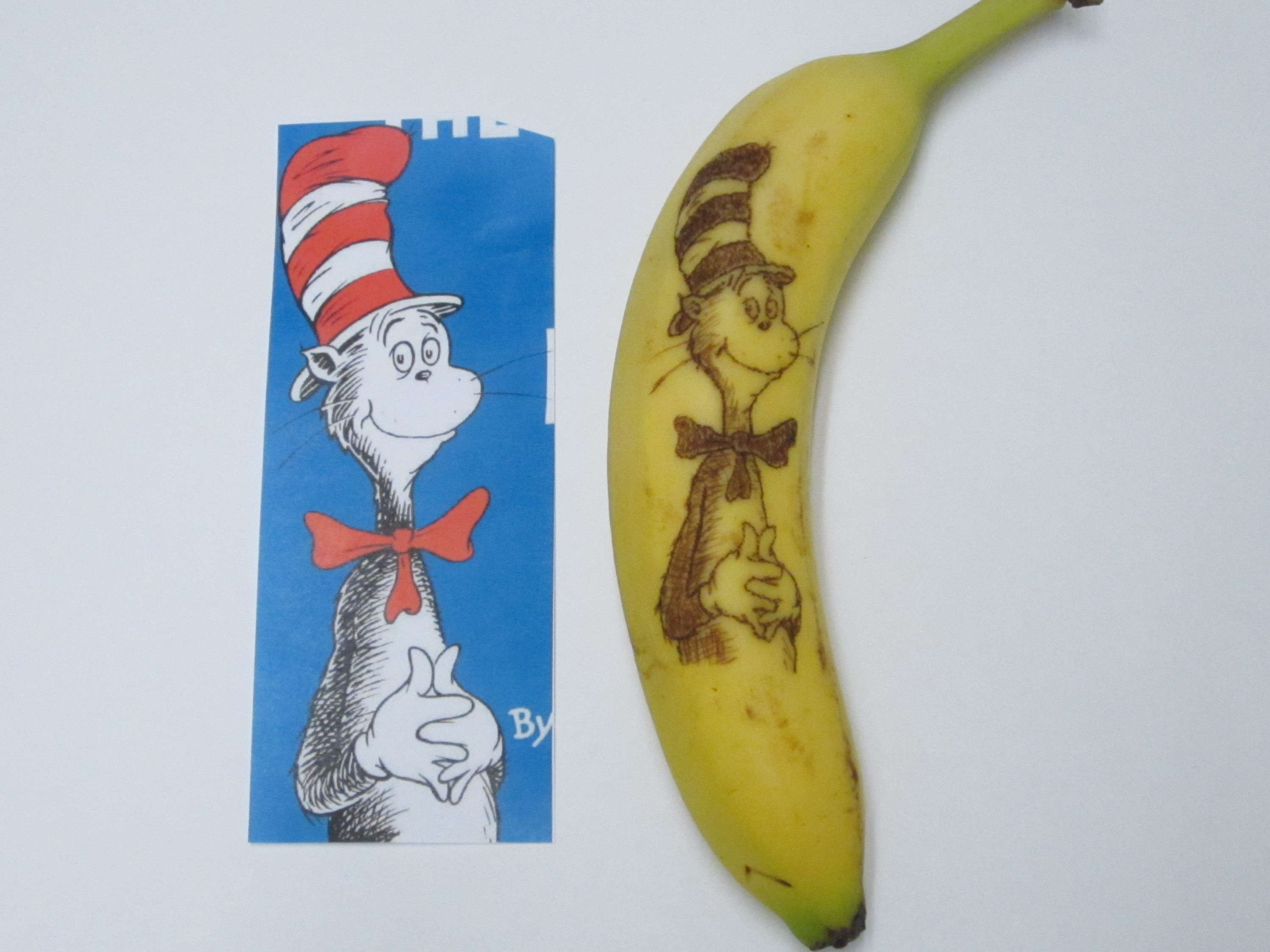
Continue to apply lines and shading until you are satisfied with the level of detail. All the markings will continue to darken over time. The finer details may last a few hours. The overall shape may remain for up to a day. It is a very temporary form of art, so take a picture of it.
It’s a fun little project to try out the next time that you find yourself stuck in the house on a rainy day.
This is an interesting way to add a little fun to your packed lunches.